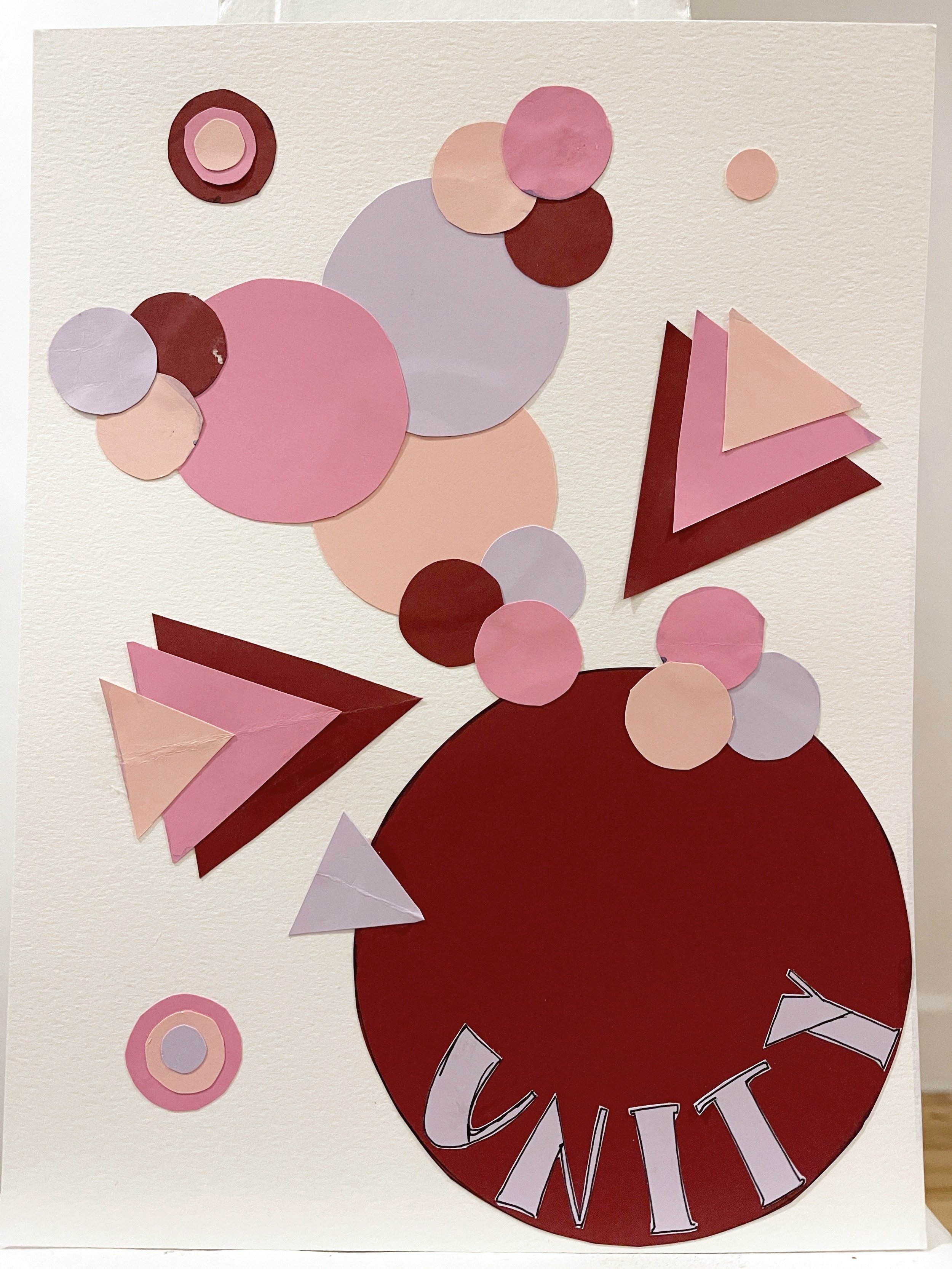The brief.
In week 8, we were asked to create 3 works: 2 to represent individual elements and principles of art and a 3rd inspired by Anthony Goldsworthy’s environmental sculptures. We connected these to ideas around arts education and pedagogy. In the final week of the course we were asked to create a visual representation of our learning in the course. I connected my experiences in the course to the creation of a kudusama origami sculpture.
Space
IHere are my two works on space and on unity. Before I start, please forgive me - while everything is collaged, the shaped are my own. I just moved and I didn't have anything with me to collage with so I did it all with just colored paper.
For space, I tried to create the illusion of depth with retreating archways, situated on a floor implying two-point perspective. I also used underlapping and overlapping to imply positions in space between the background and the foreground. I pasted a shadow below the subject, which I included just to be a bit tongue in cheek (I drew the astronaut and cut it out). I also played with the space in the frame by placing a large star off of the frame, outside the space containing the work.
Unity
Unity on the other hand, is about 'oneness' or making all the parts of the whole seem complete. I tried to create disparate elements of different colors and sizes that would appear to belong together. I created a cluster of dots equal in visual weight to the larger dot in the bottom right. I centered both sets of objects around the middle of the frame which usually helps makes things look like they belong. Then I played with contrasting shapes in the negative spaces to see how new shapes could be incorporated with the dots. Finally, the infinity loops and background were worked in watercolor, because... why not. Actually, I kind of regret that.
Revision! I re-did it without the water color. More unified? Less? I'm not sure but I couldn't stop thinking about it.
The sculpture
In learning about Goldsworthy's sculptural work, I thought about in-fill (the 'filling' in of urban areas to make the best use of existing structures). In a lot of his work that was shown this week, I thought that the clever thing was how he chose the site, then made the work to speak to and from the site (Sheridan, 2020). For example, filling in a large gap in a dead tree (Brook, 2019). So, that's why I tried to find a hollow to build my sculpture. It looks 2-d (a line of sticks) but it's not - I filled in as far back as the hollow went so the stick recede in space, into the base of the tree trunk.
References
Brook, J. (2019, October 30). BBC4 documentary forest field and sky [Video]. Vimeo. https://vimeo.com/369809478 (Links to an external site.)
Chung, S. K. & Brown, K. J. (2018). The Washed Ashore Project: Saving the ocean through art. Art Education, 71(2), 52-57. https://doi.org/10.1080/00043125.2018.1414543 (Links to an external site.)
Sheridan. C. (2020, May 19). Andy Goldsworthy - Earth artist and his process [Video]. YouTube.https://www.youtube.com/watch?v=sngXz55b4bc
Next, in thinking about the Washed Ashore project (Chung, 2018), my sculpture is a bit architectural. I was thinking about all of the elements from the ocean sitting on top of a frame. It seemed aligned with some of Goldsworthy's work in that if it wasn't built solidly, it wouldn't support itself, or support other elements (Brook, 2019). In fact, as I built it, many sticks fell over which is why I ended up filling in the sticks so far back into the tree. I had initially thought to set them up across the notch in a single parallel line but now there are many continuing parallel lines backing into the tree for stability. The front-facing sticks are leaning against a firm foundation explaining why the sculpture remained unchanged when I went back to look at it later. The end product reminds me of a fort that I could have built as a child or of a gate into the notch (if I had left any openings). I laid out little clover flowers to break up the lines a bit with a contrasting shape as well as color, just because.



